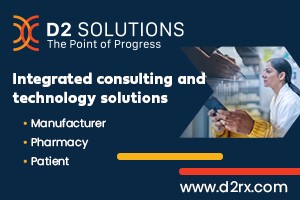Introduction:
As the trend of marijuana legalization continues to sweep across the United States, a myriad of challenges and opportunities emerge, particularly within the realm of employment practices. Balancing the rights of marijuana users with the responsibilities of employers necessitates innovative solutions. This article explores the complexities surrounding legalized marijuana in the workplace, highlights the differences between alcohol and marijuana testing, and introduces an innovative approach utilizing pupillometry to detect impairment risk.
Challenges in the Wake of Legalization:
- Duality of Legalization: Marijuana’s unique status, legalized for both medical and recreational use in many states, introduces a complex dynamic. This duality creates challenges for employers seeking to maintain a drug-free workplace, especially in the context of routine drug testing.
- Conflict with Zero-Tolerance Policies: The prevalence of drug testing in the U.S., coupled with zero-tolerance policies, presents a conundrum for employers, since some states protect medical marijuana users from termination solely based on a positive test. This protection extends to recreational users in various states, further complicating the landscape for employers seeking to maintain a drug-free environment.
Differences in Testing: Alcohol vs. Marijuana:
- Metabolism and Detection: Alcohol is rapidly metabolized by the body, with a predictable rate of elimination. In contrast, marijuana’s active component, THC, is stored in fatty tissues, leading to an extended detection period in drug tests, even after the psychoactive effects have subsided.
- Immediate Impairment vs. Extended Presence: Alcohol’s effects are immediate, and a positive blood alcohol content (BAC) test indicates recent consumption. On the other hand, a positive marijuana test does not necessarily imply current impairment or recent consumption, as THC can be detected in the system long after its effects have worn off.
- Extended Detection Period: Unlike alcohol, marijuana remains detectable in drug tests for weeks after consumption, making it difficult to ascertain whether an individual is currently under the influence at the time of testing.
The Multifactorial Nature of Impairment:
- Beyond Substances Use/Abuse: Workplace impairment extends far beyond the realm of using/abusing substances. Fatigue, lack of sleep, medications, and underlying medical conditions can all contribute to an individual’s diminished ability to function normally or safely. Recognizing that impairment has diverse sources would help employers to broaden their perspective for creating comprehensive workplace safety strategies.
Benefits of Impairment Detection in the Workplace:
- Ensuring Employee Well-Being: A workplace committed to impairment detection prioritizes the well-being of its employees. By identifying and addressing factors such as fatigue or medication side effects, employers contribute to the overall health and safety of their workforce.
- Reducing Accident Risks: Impaired individuals are more prone to accidents and errors. Early detection of impairment allows employers to intervene proactively, mitigating the risks of workplace accidents. This not only safeguards the affected employee but also protects colleagues, property, and the public at large.
- Enhancing Productivity: A vigilant approach to impairment detection contributes to a more productive work environment. By addressing factors that hinder optimal performance, employers can create conditions that foster efficiency, collaboration, and high-quality output.
- Positive Workplace Culture: Prioritizing impairment detection reflects a commitment to a positive workplace culture. Employees are more likely to feel valued and secure when their well-being is a central concern, fostering a positive atmosphere conducive to professional growth and satisfaction.
Innovative Solutions with Pupillometry:
- The Role of Pupillometry: Pupillometry, the measurement of pupil size and reactivity, offers a solid avenue for detecting impairment risk. The eyes, often considered windows into the soul, also provide valuable insights into neurological functionality.
- Pupillary Light Reflex (PLR): PLR, a well-established reflex involving the central and peripheral nervous system, can be quantitatively analyzed to assess neurological anomalies. Alterations in PLR responses are indicative of possible impairment, making it a valuable tool in Fitness-for-Duty applications.
- Proven Effectiveness: Over the past 70 years, medical and scientific studies have validated individual PLR responses as a reliable index of central nervous system functionality. Pupillary analysis can detect impairment risk resulting from drug use, sleep deprivation, and other neurological conditions.
- Proactive Risk Management: The innovative use of pupillometry, exemplified by solutions like SOBEREYE, enables employers to engage in proactive risk management. By identifying potential impairment risks in real-time, organizations can intervene swiftly, preventing accidents and creating a safer work environment.
Conclusion:
In conclusion, recognizing the multifactorial nature of impairment in the workplace is essential for fostering safety and productivity. Beyond the challenges posed by legalized marijuana, the broader spectrum of factors contributing to impairment necessitates a comprehensive approach. Implementing strategies for impairment detection, such as the use of pupillometry, not only addresses the risks associated with substance use but also promotes a safer, more productive, and legally compliant work environment. As workplaces evolve, embracing innovative solutions becomes crucial for maintaining a positive and secure atmosphere for employees.
Antonio Visconti
C.E.O./Founder
SOBEREYE INC.
antonio.visconti@sobereye.com
www.sobereye.com


